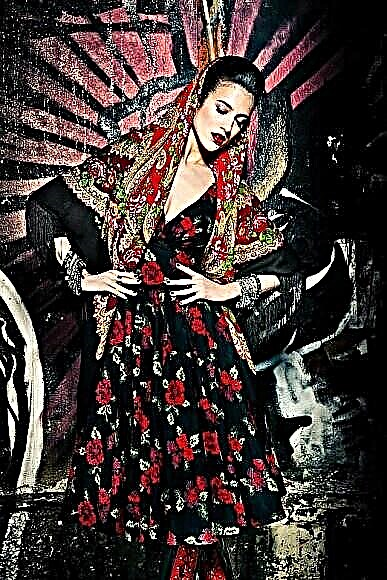In good weather, fans of the so-called Scandinavian walking appear in parks, squares and even on unknown paths. It is available to both men and women, and has no age restrictions.
In English, the name of this workout sounds like Nordic walking. It is also called Nordic walking, it is also Scandinavian, Finnish, Swedish or Norwegian. Its essence is that in the off-season (from August to November, as well as from April to June), cross-country skiers actively use the so-called imitation: they walk, run and even jump with ski poles. But sticks in hand will come in handy for an ordinary person, not even a very young one. For example, if your knees are injured or there is excess weight, then running is unavailable, and it’s just hard to walk. And relying on sticks, you can go a lot more, which means you can burn extra calories and train muscles. At the same time, the load falls on the upper body, which is impossible with normal walking.
Very quickly, Nordic walking became popular not only among obese, elderly or in need of rehabilitation after injuries. This is a godsend for those who do not like fitness in the gym, but just like to walk. Like any aerobic (long and not very intense) load, it burns fat and strengthens the cardiovascular and respiratory systems.It normalizes blood pressure, lowers cholesterol and strengthens bones. At the same time, walking is a form of fitness that is safe enough for joints. Largely thanks to the sticks. You can rely on them if you stumble, carry part of the weight if your knees or back hurt. Plus with sticks you can do squats, bends, lunges, stretching.
Where to begin?
Try to walk slowly so that the body feels and accepts a new movement. The first steps can be mastered even without sticks, so as not to get confused, especially if there is no experience of skiing.
Starting position: the right hand is slightly bent at the elbow and extended forward, leaning on it. The left one is lowered at the level of the pelvis and is preparing to move backwards, you are about to push off with it.
Step forward with the left foot on the heel, the right leg still holds the weight of the body. Rolling the left foot from the heel to the toe, partially transfer the body weight to the same leg and right arm.
Finally, fully stand on your left foot, push hard down and back with your left hand. When the repulsion is completed, the stick will be in the back in an almost straight hand. Relax the brush and fingers as much as possible, practically without holding the stick - it will not fall, the lanyard will hold it (the loop on the handle). Without this relaxation, your wrists will hurt.
Now the right leg (on the heel!) And the left hand (with the arm still relaxed) are moved forward. Partially transfer the body weight to them, push off with the other hand and leg. Etc…
Perhaps the movement seemed complicated to you, but it is only in words. As a rule, the body gets used to it after 10-15 steps.When you feel that steps and repulsions are given easily and naturally, gradually increase the pace.
Equipment
■ Stick length. Calculate it according to the formula: multiply the growth in centimeters by 0.68 plus or minus 5 cm. The higher the sticks, the greater the load on the shoulder girdle and the more intensive they can work. If there are problems with the shoulder or elbow joints, cervical osteochondrosis, take shorter sticks. If your legs hurt, then longer sticks will help to transfer the weight from upside down.
■ Types of sticks: telescopic (folding) and ordinary. The first is convenient to carry with you in transport. It is important to consider the material. Aluminum is relatively heavy and soft, but it is almost impossible to break. Fiberglass is easier and can break. Carbon (carbon fiber) - the most rigid and light, but the most brittle.
■ Lanyards. Pass your hand through the loop from below and grasp the handle. The loop tape should be inserted into the handle evenly, otherwise it will rub.
■ Tips. The most comfortable and stable on asphalt and stone are rubber. Plastic ones with a metal pin are more stable on the ground. The different shape of the paws (a plastic cup over the tip) helps the stick not to fall into the sand or grass.
■ Footwear. The sole should be thick so that the feet do not get tired of uneven soil, soft to absorb the steps, and flexible, otherwise you will not be able to make an important roll from heel to toe. The right choice is running shoes. Do not use tennis and trekking sneakers, their sole is very stiff.
Advice:
■ Begin with 20-30 minutes.More prepared can start from 40-60 minutes.
■ Use hills and slides, if any. Lifting significantly strengthens the abdominal muscles and tightens the lower abdomen.
■ To save power and prevent injury, try to minimize body sway up and down. Turn your shoulders and look forward, this will help not to pull the body.
■ Catch the optimal stride length on the plain, and to increase the speed do not lengthen the steps, but make them more frequent. Too long a step can lead to joint injury and disrupt rhythm. Downhill the step is longer, when rising - shorter.
■ Walking on asphalt is easier. And grass, soil, sand or snow underfoot will make the muscles responsible for balance work, and will add stress in general.
 The article was published on the materials of the magazine "Good advice" 9/2013
The article was published on the materials of the magazine "Good advice" 9/2013
Text and photo: Tatyana Minina
Material prepared by Julia Dekanova



